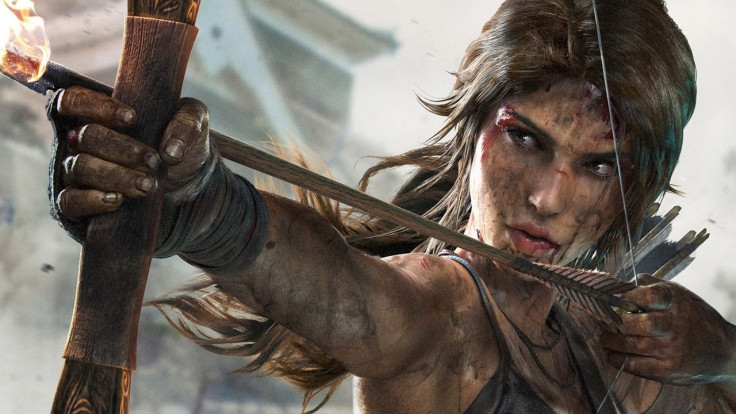Lara Croft first showed up on our TV screens twenty years ago, shooting and flipping her way into our hearts. Fast forward to today, and despite several changes of developers and publishers, Lara’s adventures are still going strong, and are arguably more popular than ever.
“Very few video game franchises can say ‘I’ve been around for 20 years,’” Chris Johnston, the associate brand manager at Crystal Dynamics, told iDigitalTimes. Crystal Dynamics just released its latest Tomb Raider adventure, called Blood Ties, which explores Lara’s childhood home and her backstory. “It’s a very exciting time for us, that’s one of the reasons why we’re looking at Lara’s timeline, we want to bring this mansion back in.”
To really get players in the mindset of Lara Croft, the Blood Ties expansion can be played using a PSVR headset. “The Blood Ties content is really about immersion and deeper storytelling,” Johnston said. “You can play it in third-person, but once you drop on the headset and play it in first-person, it’s another level of immersion. If people haven’t played VR yet, they should really try it out. You’re IN that world, and you can lose yourself and feel like you’re actually Lara Croft.”
Johnston gave an example of storytelling from Blood Ties, which can be found in a sequence from the library. “If you play the game, Lara has an idle animation where she rolls her shoulder,” he said. “When she walks into the library, she’ll say ‘Oh, I remember that ladder. I fell off it when I was a kid and I hurt my shoulder.’ There’s so many different ways we can tie everything back in.”
Johnston even teases the return of a fan-favorite character. “If you remember Winston the butler, he’s reintroduced,” he said.
Despite Tomb Raider’s 20-year history, Blood Ties focuses on the reinvented character of Lara Croft from the 2013 reboot. That doesn’t mean fans of the older games won’t find anything to appreciate as well. “Everything that takes place in the manor is from the modern timeline, but there still are references to the older games,” said Johnston. “Winston, for example, is in the game. You’ll be able to find a stuffed T-Rex toy. There’s little things here and there that as players going through this world, you’ll say ‘hey, I remember that from this game.’”
As for Lara Croft and Tomb Raider in general, Johnston was proud he and his coworkers at Crystal Dynamics have been able to keep the franchise flourishing. Despite having worked on Tomb Raider games in the past, the 2013 reboot was really the developer’s first major Tomb Raider game in years, and a massive departure from previous installments. “It’s not an easy task [rebooting a game series] at all when you have such a storied franchise with just an iconic heroine,” he said. “The team at Crystal Dynamics, luckily we have a lot of talented workers there.”
Lara Croft could be seen as the first major video game sex symbol, especially once Angelina Jolie became associated with the character in 2001’s Lara Croft: Tomb Raider. Johnston feels that today’s Lara moved away from the sex symbol status, and is now one of the more powerful figures in gaming. “Some people may look at her as a sex symbol, but you also look at her as a powerful female in video games. She’s been able to do things other video game characters haven’t,” he said. “She has a successful movie franchise, she’s been in comics and novels, she’s been in all these different mediums.”
The success of being a strong female in gaming really helped shape the Lara we see in the 2013 Tomb Raider and Rise of the Tomb Raider. “We looked at the reboot and wanted to create a character that was more believable,” said Johnston.
Despite the changed character, Johnston is proud Crystal Dynamics still made its version of Tomb Raider have all the essential elements that other games in the franchise have. “You look at the four pillars of the game, action, adventure, puzzle solving and exploration. Those pillars are found in every Tomb Raider game,” he said. “Now those pillars are kind of seen through a survival lens, with Lara having to craft resources and survive. The grittiness kind of made it more realistic.”
While Johnston was happy to talk about the past 20 years of Tomb Raider, he wasn’t able to share what the future will hold for the franchise. He did mention he’s excited by the new technological options available. “I’m just hoping 20 years from now, people will still be able to relate to Lara Croft and we’ll be able to push it to the next experience to make it even more immersive,” he said.
With all the different versions of the character, Johnston didn’t want to speak for everyone at Crystal Dynamics about what he thought was the “definitive” Lara Croft. “Anyone from Crystal Dynamics could have a different Lara that they prefer, and they’re all such different characters. The first game I worked on was actually the 2013 Tomb Raider, so that’s something that I personally have a very strong attachment with,” Johnston said.
Congratulations to Lara Croft and Tomb Raider for a successful 20 years of gaming. Here’s to the next 20 years!
So what do you think? Are you going to be playing a Tomb Raider game to celebrate the anniversary? What version of Lara Croft do you like best? Let us know your thoughts in the comments section below.














![[EG April 19] Best 'Stardew Valley' Mods That Will Change](https://d.player.one/en/full/226012/eg-april-19-best-stardew-valley-mods-that-will-change.png?w=380&h=275&f=955520b8313253ee3c39c791f6210f38)



